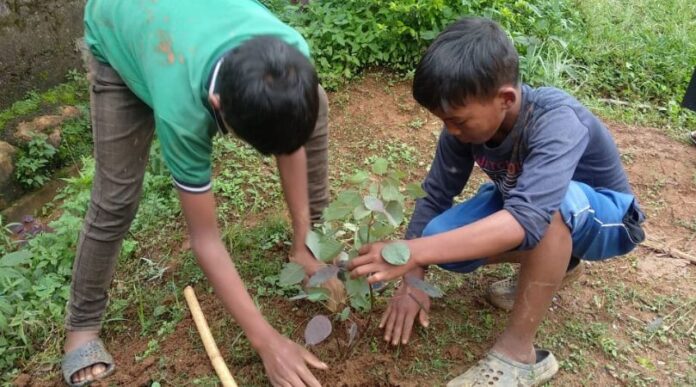By the Editor:
Another theme-based World Environment Day has come and gone preceded by a series of events both in Meghalaya and across the country. The intentions, needless to say, are noble as intentions generally are. Across the state and country, thousands upon thousands of saplings have been planted which one day will bear fruit or flower or, at the very least, offer shade which will be particularly beneficial in places where the Celsius travels way up north during summer. It is a different matter though that most of these saplings may not reach the height they are meant to and may die a premature death, unsung. It is not only on the occasion of World Environment Day that such saplings are planted, but even on other occasions, but rarely are they remembered to be watered or taken care of once the dust settles down on these events.
As for Meghalaya, and according to the government, the key environmental challenges that confront the hill state are deforestation, fragmentation of forests, soil degradation, biodiversity loss and contamination and silting of water bodies. “Unregulated, unscientific, and often illegal mining and logging, and the practice of short cycles of jhum are responsible for these,” the government says. Knowing what is the problem is a good beginning for that then helps to chart the healing course. But it is from this point on that assorted hurdles begin to surface making execution of plans difficult, so much so that years go by and the problem remains if not further exacerbated. The government paper goes on to say that while unregulated and illegal activities are a result of an absence of clear resource use policies, including the land use policy, and lack of clarity in ownership rights of resources, the paucity of technical and other support for improvement in jhum cultivation, and an almost total absence of inputs emanating from research on small area and eco-friendly high yielding varieties of rain-fed crops has resulted in soil erosion, degradation, and low productivity. Contamination and silting of water bodies have been caused by unregulated and unscientific mining, forest clearing, and unsustainable short cycles of jhum.
Be that as it may, the one nugget of hope that this year’s celebration has thrown up vis-a-vis the state’s rivers is the revelation that the pilot project to restore the Lukha river to its past pristine self has been a success. This was brought about through Phycoremediation, which is microbial remediation where algae and bacteria are deployed for the removal of toxic and non-toxic substances in water. The state government will now use this process to try and rejuvenate two other rivers – Lunar and Kyrhuhkhla in East Jaintia Hills district. In the process, effort will be made to raise the pH level in the rivers — pH is a measure of how acidic/basic water is. The range goes from 0 – 14, with 7 being neutral. The Lukha now is said to have pH level of 6.5. As for long-term plans to conserve environment, it is imperative that people be encouraged to participate, particularly those living on forest edges. Also, while it is true that one cannot wish away development there must be some synergy with nature.


